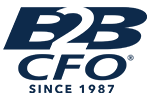
Working Capital Improvement
Posted on March 20, 2020 by Dennis Niven
By Dennis Niven
Working Capital – The Precursor to Cash – Working capital management is arguably the most important management activity in emerging and mid-sized companies because of the significant financial impact that it has on the company’s well-being. While most CEOs and business owners have heard and accept that “Cash is King,” working capital, the precursor to cash, is often the least understood and most poorly managed area of companies when they first visit with one of our partners. This is true even though the definition and calculation of working capital and working capital ratios are widely understood and seem to be simple enough at the personal checkbook level.
When working capital is not adequately managed, the deterioration of cash flow critically affects a company’s ability to fund operations, reinvest in the business and, ultimately, to survive. With adequate working capital management, cash flow supports a company that thrives in the marketplace.
With working capital management being critically important to a business combined with the fact that few CEOs and business owners truly understand or have the time to manage working capital, it is imperative that a company has experienced, professional assistance in managing the various and complex elements of working capital. B2B CFO® partners are real-world experts in working capital management at the highest levels of America’s fastest growing companies. Cash. We Help You Get ItTM is not only our slogan; it is what we do with hundreds of clients every day.
Need to Know More? – Following is a discussion of working capital for business and why it is so critical and complex to manage. Few areas within a business can so quickly make or break the CEO’s or business owner’s vision for the future.
Definition of Working Capital – Working capital for business is often referred to as simply the excess of short-term assets over short-term liabilities. Short-term assets include cash and other assets expected to be turned into cash within one year – marketable securities, accounts receivable, short-term notes receivable, inventory and prepaid expenses. Short-term liabilities include those expected to be paid with cash within one year – accounts payable, short-term debt such as credit lines, the short-term portion of long-term debt and accrued expenses.
Calculation of Working Capital Ratios – The current ratio, a measurement of working capital and a commonly used test of a company’s financial strength, is the total of short-term assets divided by the total of short-term liabilities. Generally, if the result is less than 1.0 then the company might not have enough working capital assets to convert into cash to pay liabilities and operating expenses when they are due. On the other hand, if the result is greater than 1.5 the company is generally considered as having enough working capital assets that can be converted into cash to pay liabilities and operating expenses when they are due.
The acid test ratio, also called the quick ratio and liquidity ratio, omits inventory from the current ratio calculation to crudely indicate whether a liquidation of the company would provide enough cash to pay the company’s debts if operations ceased. Generally, a result of at least 1.0 is considered to be acceptable.
Reliance on Calculations and Ratios – CEOs and their staffs tend to look (if they look at all) at working capital computations that yield current and acid test ratios greater than those generalized above as comfort that the business is doing well enough concerning liquidity, and turn their focus away from working capital management to marketing their product or services, making or acquiring the product, providing their services, etc.
Our seasoned partners are trained in working capital management and know that the above generalizations are not adequate, and are often entirely misleading, to assess the financial health of the company.
What is Adequate Working Capital? – Adequate working capital for business varies, often extremely, from a small business to a large business, from an under-capitalized company to a well-capitalized company, from a growing business to a business declining in size or sales, certainly from a start-up company to a mature company, and it varies from one day to the next. What might be adequate is quite different between times when excess cash needs to be invested and times when the business owner has no idea how to fund tomorrow’s payroll.
Working capital measurements and ratios also have severe limitations in working capital management. They are snapshots of one moment in time and can vary greatly moment to moment. The assumed liquidity of assets is often misrepresented on company balance sheets, as the historical cost of assets often varies greatly from their market values. Some liabilities and, especially, assets might not be recorded at all (e.g., contingencies and goodwill). Companies involved in start-up and high growth situations are even more difficult to assess using traditional measurements and ratios.
Some industries (e.g., manufacturing) require a high level of working capital. They incur a long period of time from when cash is first paid for what is eventually sold, to when cash from the sale is finally collected. Other industries (e.g., large retailers) require little working capital because they sell products for cash before it is required to pay for the product, and profits are readily available for reinvestment in the business.
Working Capital Financing – Ideally, companies finance working capital for business through adequate capitalization by owners and profits reinvested in the business. Working capital financing of various types are often needed, however, especially in the day-to-day operations of growing businesses.
Common types of working capital financing include: owner contributions and loans, extended vendor terms, bank financing secured by receivables and inventory, revolving business credit card debt, merchant credit card advances, factoring of accounts receivable, and sale-and-leaseback arrangements. Note that this does not include loans for long-term assets, such as buildings and equipment, which do not revolve and should be financed with term-debt secured by the long-term assets.
B2B CFO® partners are experienced in determining a company’s need for working capital financing and helping the company fill those needs. Having secured financing for a large number of clients, our partners know where to go for working capital financing and what is expected of the company in order to obtain a loan, often for an amount in excess of what the company needs.
Real-World Working Capital Management Methods – Far beyond working capital calculations and ratios, maintaining adequate working capital for business requires the use of several hands-on management methods. These methods vary in application from one business to another.
Among the most important elements of working capital are levels of invested cash, inventory, accounts receivable and accounts payable. We look at these elements as signs of a company’s financial strength and the efficiency of its operations.
While generally the more cash a business has the stronger it is, an excess of cash may be a sign of operating inefficiency. If cash is high, is it being invested wisely? Can the business internally produce a better rate of return on excess cash than is externally available? Cash might be better used to grow and strengthen the business, acquire complementary businesses, or improve the community in which the business operates.
Cash Conversion Cycle – The biggest single use of the cash provided by a growing company’s profits is an increased accounts receivable balance. Goods sold on open accounts must be acquired with an outlay of cash well before cash is received from the sale of the goods. This is especially true in businesses that sell out of an inventory of goods, but applies in the sales of services as well. An analysis of this cash conversion cycle often gives valuable clues about the underlying health of a business model.
Simply explained with an example, if a business holds inventory for an average of 82 days, takes an average of 36 days to collect accounts receivable and pays its accounts payable in an average of 28 days, the business will have a cash conversion cycle of 90 days (82+36-28). Ideally the carrying cost of the cash conversion cycle is included in the sales price of products, but what does this mean to this company that is going to grow from $10 million in sales to $14 million in sales this year (with a 35% gross profit, 10% SG&A and while only increasing inventory by 20%)? The company will require a cash injection of over $779,000 to finance the cash conversion cycle, while the CEO or business owner may be naively expecting to have $400,000 more in cash from profits. The swing between perception and reality can be quite shocking, especially when your available credit line going into the year is for instance, $200,000, and the owner makes tenant improvements to support the growth and buys a new car.
This does not mean that growth is bad. It does mean that things like Days Sales Outstanding for accounts receivable, Inventory Turnover for inventory, and Days Payable Outstanding for accounts payable need to be closely monitored and improved. In addition, management attention must focus on Working Capital per Dollar of Sales appropriate for the industry and entire supply-chain management issues in addition to growth-related matters such as sales commission incentives often used to make growth happen and wage and salary expectations within a growing company.
Summary – The Need For Experience – The discussion above only touches on the need for professional working capital management. Real-world cases always involve additional complexities such as LIFO inventory reserves, tax implications, derivatives and off-balance-sheet financing. B2B CFO® partners are real-world experts in managing working capital for business at the highest levels of America’s fastest growing companies. Cash. We Help You Get ItTM is not only our slogan; it is what we do with hundreds of clients every day.

